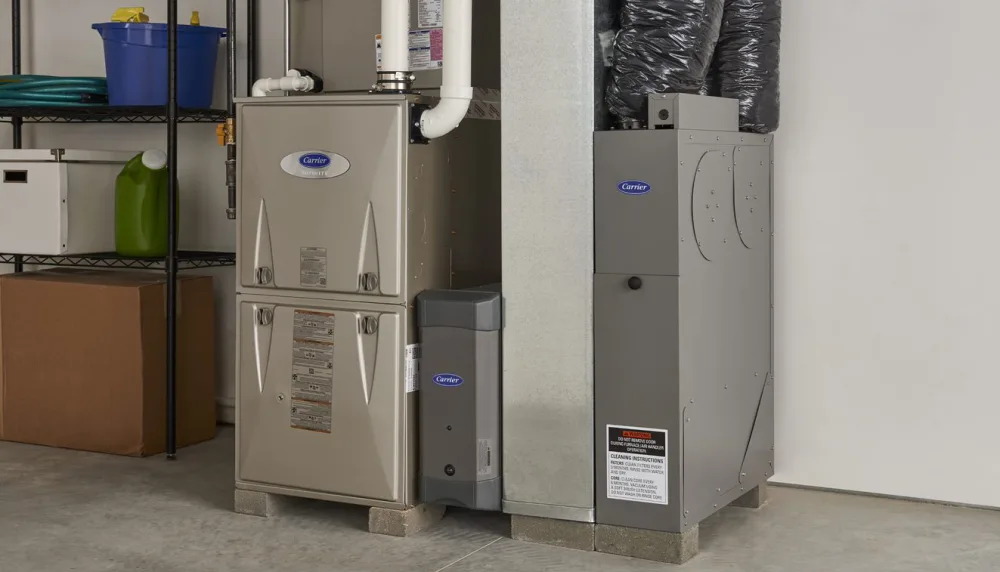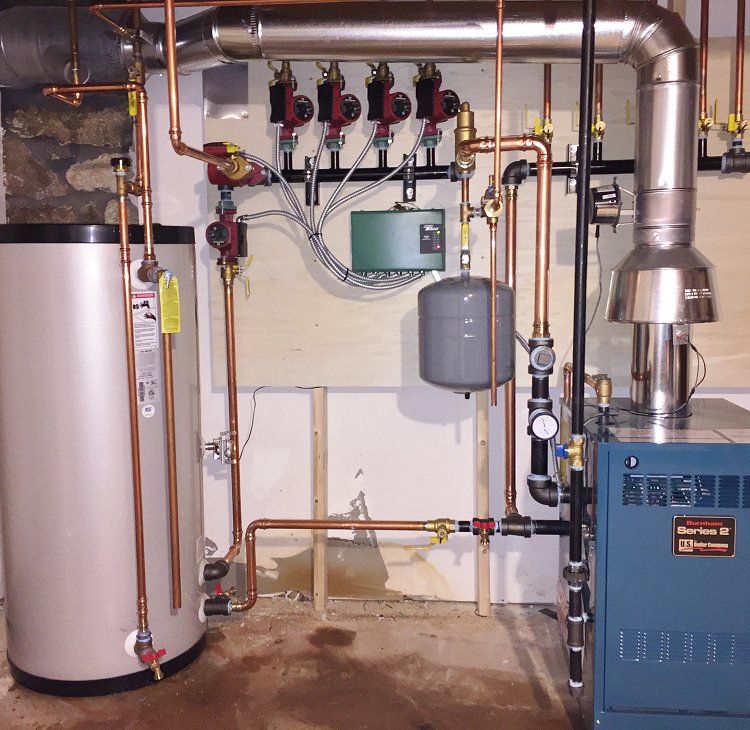The average cost of an installed gas furnace is $5,700 for an 80% efficiency furnace and $7,200 for a furnace of 90% or higher efficiency.

The total cost range of a new furnace installed is $4,000 to $10,500 based on size, efficiency, stages of heating and brand plus installation factors.
What’s here? Comprehensive new furnace pricing, top brands and Buying Guide that will make your purchase decision easier.
New Furnace Cost
Many homeowners getting new furnace price estimates are going to have sticker shock. The cost of a new furnace is much higher than it was a few years ago due to the factors we’re all familiar with – supply chain problems, labor shortages and inflation.
| Efficiency | Basic | Better | Best |
| 80% | $4,000 – $5,200 | $4,500 – $6,300 | $5,800 – $7,700 |
| 90% – 93% | $4,400 – $5,700 | $5,300 – $7,000 | $6,600 – $8,800 |
| 94% – 96% | $4,700 – $6,100 | $5,800 – $7,500 | $7,100 – $9,200 |
| 97% – 99% | N/A | $6,300 – $8,100 | $7,700 – $10,500 |
Here is a general overview of basic, better, and best gas furnaces.
Basic: Single-stage heating. Single-speed or multispeed PSC standard-efficiency blower motor. Efficiency of 80% or 90% to 93%. Basic single stage thermostat.
Better: Two-stage heating. Efficient multispeed or variable-speed ECM blower motor. Efficiency of 80% or 93% to 97%. Requires 2-stage thermostat.
Best: Two-stage or variable capacity heating. Variable speed ECM blower motor. 80% or 94% to 99% efficiency. Optional communicating technology that shares information between system components to optimize efficiency and climate control (requires communicating thermostat).
Yes, some 80% furnaces belong in the “Best” category because they are high quality and equipped with a variable speed blower and other top climate control features.
80% efficiency or 90% and higher? Yes, those are your gas furnace efficiency options. All manufacturers make 80% AFUE/Annualized Fuel Utilization Efficiency furnaces with a single heat exchanger. Once you add a second heat exchanger that captures heat from exhaust gasses before it is lost, efficiency rises to 90% or higher.
 source:
source: